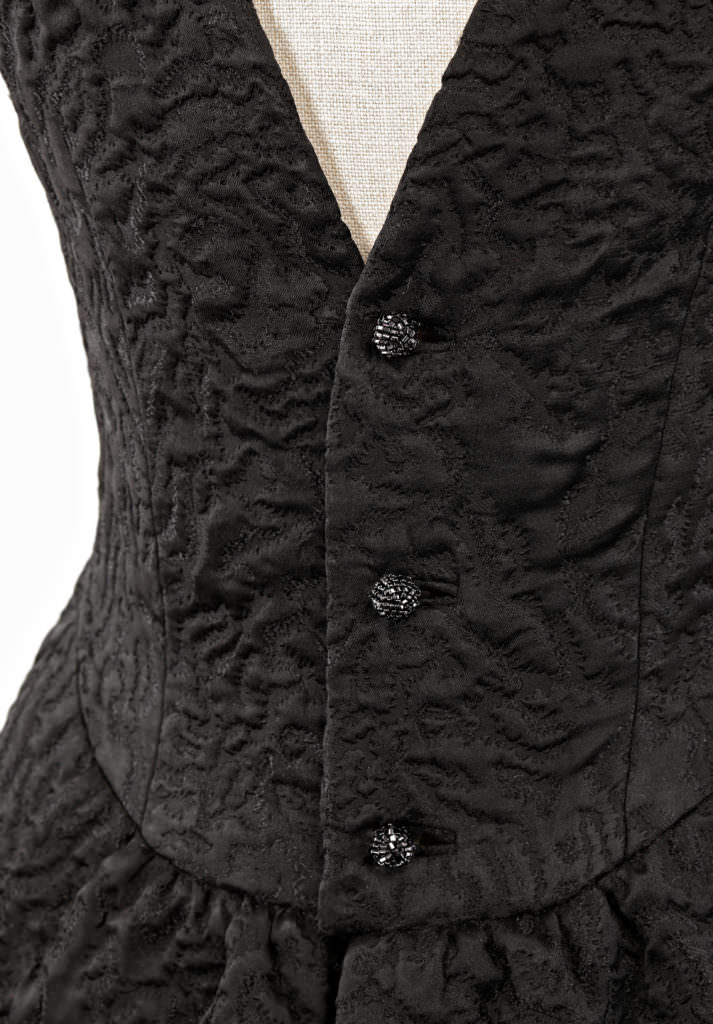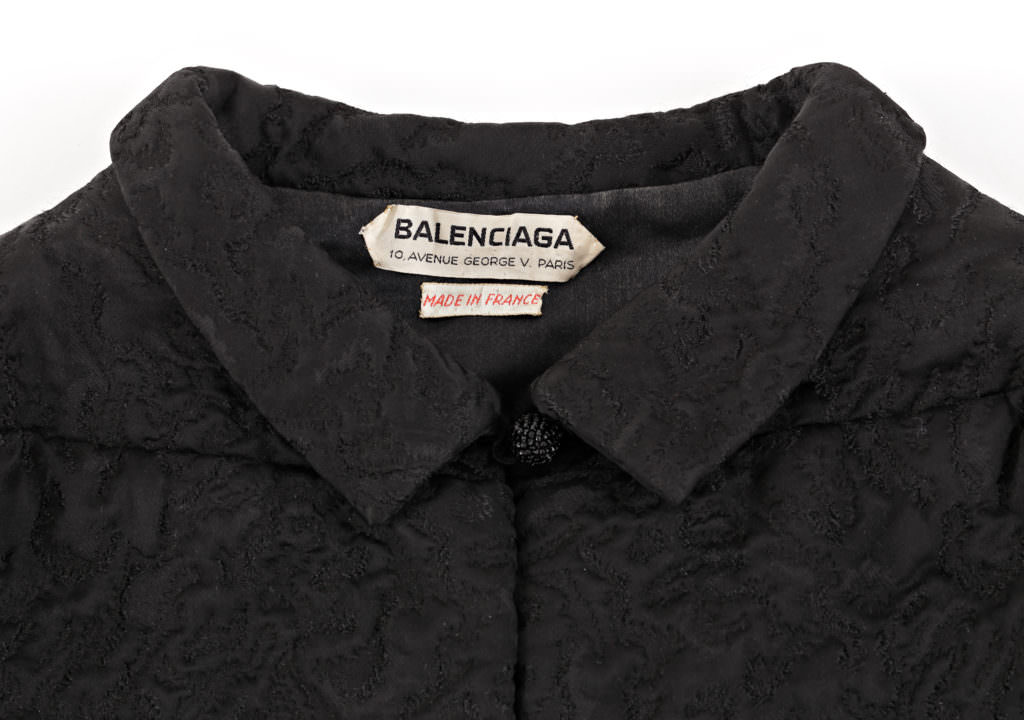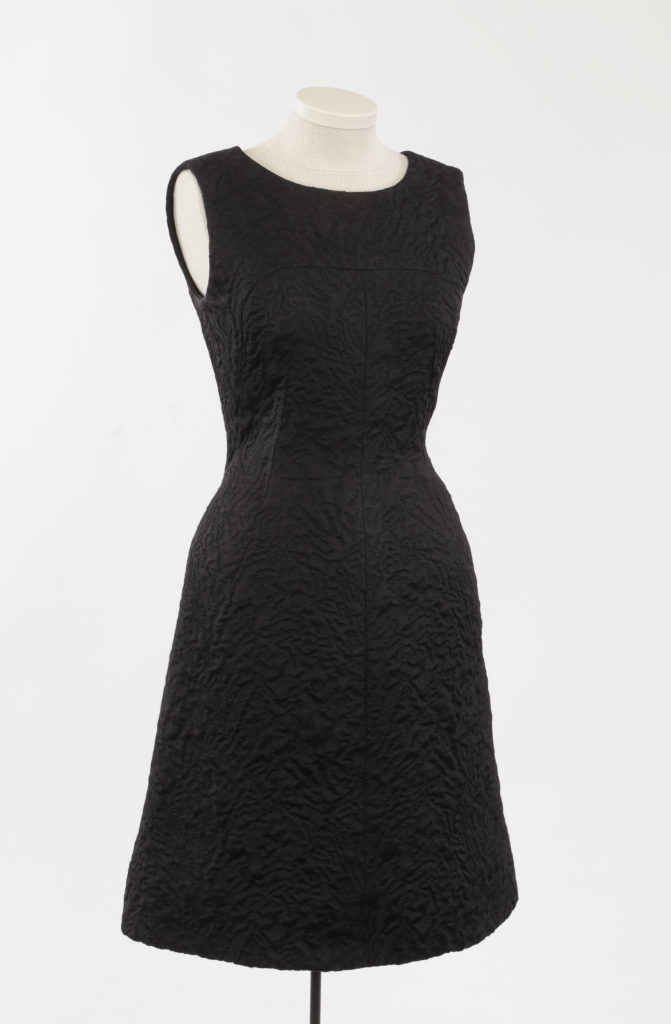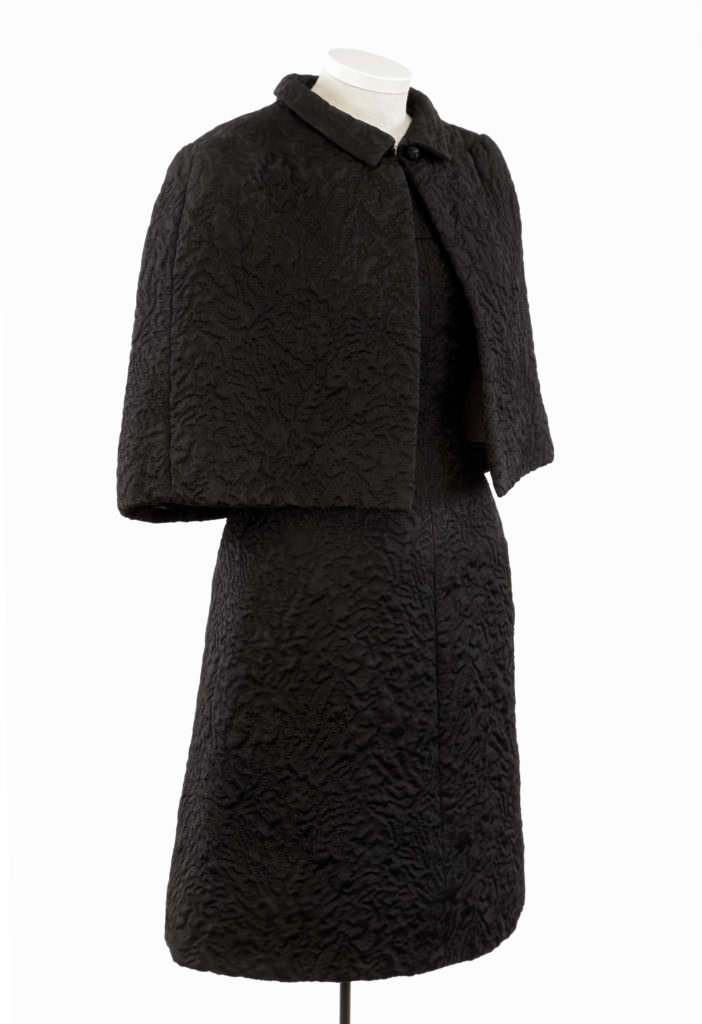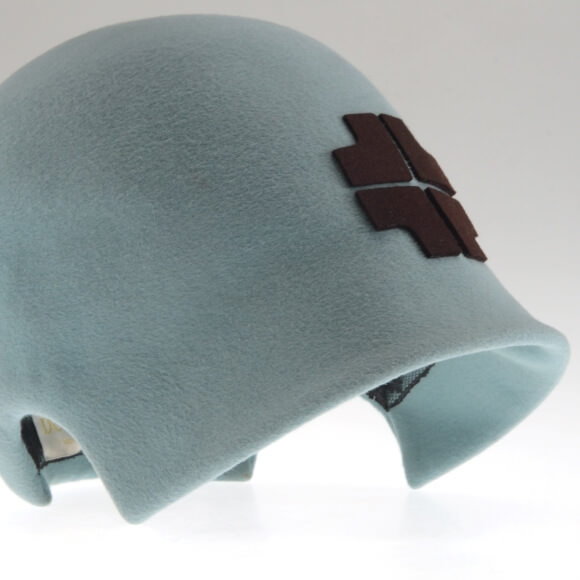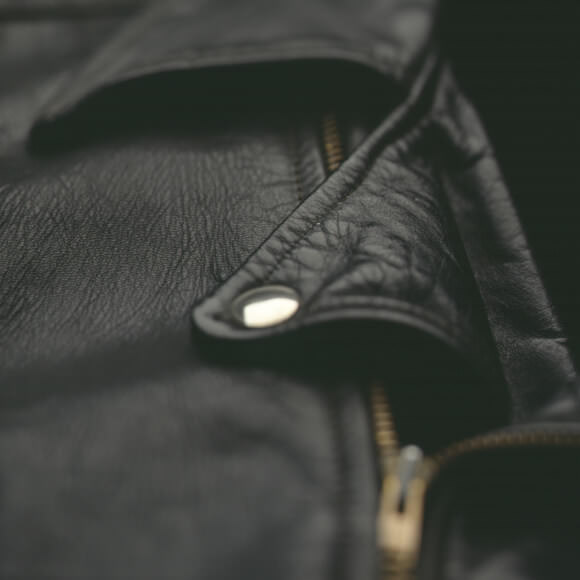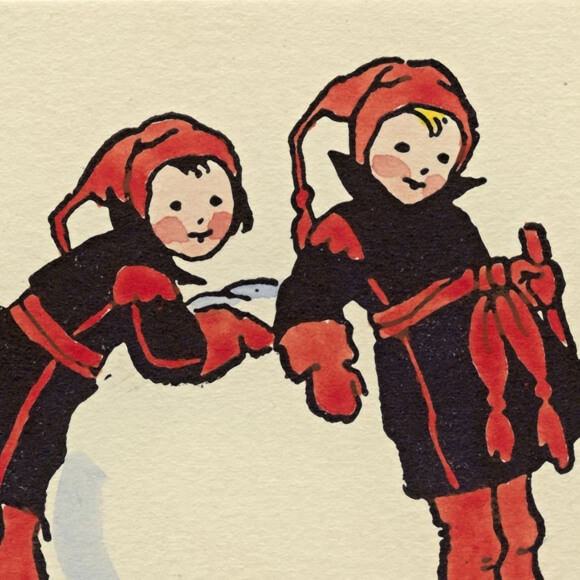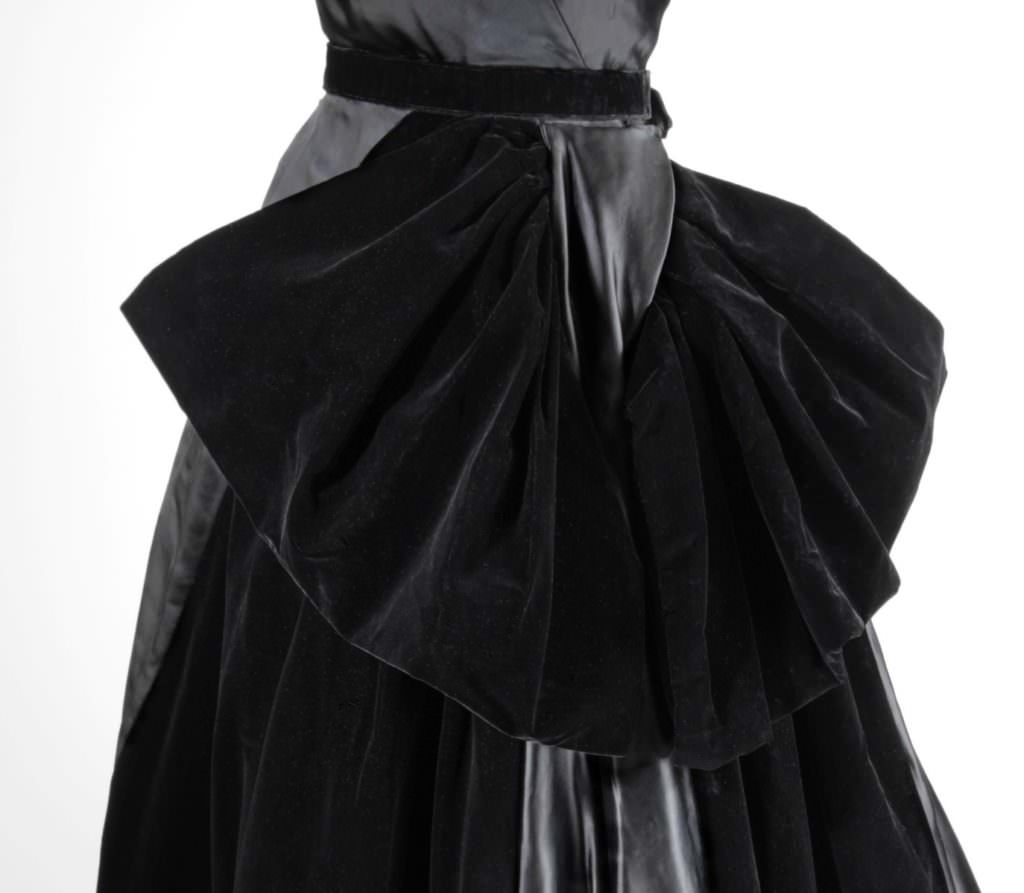
Cygne Noir dress, Christian Dior, purchased at Henri Bendel Inc., about 1950. Gift of Margaret Rawlings Hart, M967.25.9.1-3 © McCord Museum
Bonded models were European couture garments imported into the United States for use as design sources, and then exported, most often to Canada, to avoid duties. Bonded garments made up a significant portion of the imported couture sold in Canada from the 1950s through the early 1970s. They are well represented in museum collections, and are often identifiable by a fabric label with penciled information that may include an American store name.
French haute couture was notoriously expensive; Italian couture offered garments of similar quality at a lower price point.
In both cases, couture houses charged stores a significantly higher price than that paid by their individual clients because a store’s purchase price included the right to copy the garment.
The steep duties levied on these high prices would have made the pieces prohibitive to import, so U.S. stores brought them in duty-free in “bond,” which meant they could not be legally sold in the country. Under this system, couture garments arrived in the U.S. in a single shipment each season. On arrival, the garments were registered by customs and marked with a small metal tab, usually attached within a seam, indicating that they were bonded. Within a set time frame, usually six months, renewable once, the bond expired. At that time, to avoid paying customs duty along with a significant penalty, the purchaser had to return the garments to the source, destroy them, or export them. Selling them to another country provided the greatest return on the initial investment and was the most practical option.
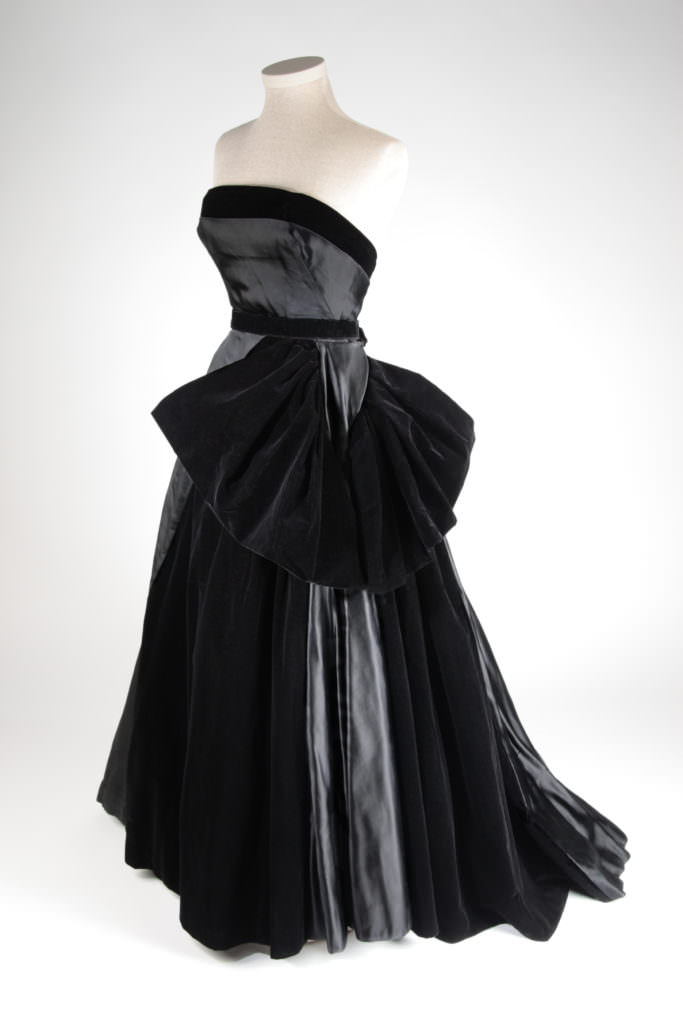
Cygne Noir dress, Christian Dior, purchased at Henri Bendel Inc., about 1950. Gift of Margaret Rawlings Hart, M967.25.9.1-3 © McCord Museum
Canada and South America provided convenient markets for the garments when the U.S. stores were finished with them. Canadian stores frequently arranged with U.S. stores to purchase entire lots of bonded models. They also purchased individual items from manufacturers. In all cases, they could purchase the models at a fraction of the initial price, and turn a profit even when reselling them at a deep discount.
In Quebec, bonded models were sold primarily in Montreal by Ogilvy’s and Holt Renfrew stores, as well as Eaton’s, Simpson’s and Morgan’s. Regular clients of these establishments were alerted when new clothes came in, and considered bonded models to be one of the perks of their status.
Bonded models had some disadvantages; since they came in a single size, only slender clients were in the market for them.They were also second-hand clothing, having been worn by models on two continents, possibly multiple times. They frequently showed significant signs of wear or were missing elements. In some cases, they had even been taken apart and reassembled. They had also been released several months and perhaps up to a year earlier, so were no longer the dernier cri.
The bond system played a significant role in making European couture garments available in Quebec.
It also created a profitable business niche for Paris couture and was an important design resource for the North American fashion industry.
Share
DownloadRecommended entries
© MCCORD STEWART MUSEUM 2025




